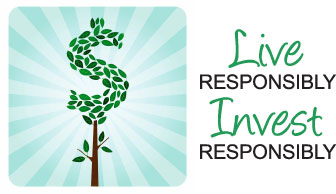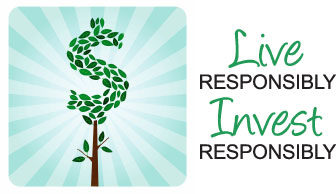By Jennifer R. Figurelli
I suspect that most, if not all of the readers of Transformation magazine are socially responsible to a large degree. That would include those of us who separate recyclables from our trash, eat organic food when possible, purchase eco-friendly products, and maybe volunteer for a charity. But when it comes down to managing our finances, are we truly making a positive impact on people and the planet?
You may wonder if there really is such a thing as investing in companies that are environmentally and socially responsible and, if so, what does being socially responsible mean?
In simple terms, Socially Responsible Investing (SRI) is an investment strategy where one aligns investing values with personal values. It is an extension of an individual’s lifestyle.
SRI began more than 200 years ago during the Methodist religious movement when its founder, John Wesley, urged his followers to refuse investing in their neighbors who profited from alcohol, tobacco, weapons, and gambling. During the 1960s, SRI grew as many young people who were in opposition of The Vietnam War protested against companies that manufactured firearms and other weapons used in the War. In the 1970s, social activism grew in the management of corporations as unions were formed against unfair labor practices and worker safety issues. Concern for the environment became another consideration, as the first Earth Day was celebrated on March 21, 1970. In the late 1970s, apartheid in South Africa led to an international protest and trade embargo.
SRI then gained notoriety in the financial industry in the 1980s with the establishment of screened mutual funds, Social Funds, Citizens Mutual Funds, and Calvert Funds. By 1990, there was such a growth of popularity in SRI to warrant an index to measure performance.
The Domini Social Index was created in May 1990, and it includes 400 large-cap, U.S.-based companies comparable to the S&P500 Index. The companies in this index were chosen based on social and environmental factors. Subsequent to the Enron fraud, “governance” has received heightened awareness and has become an added to the criteria of evaluating a company.
Embracing SRI
So, how do you become a socially responsible investor? The process begins by analyzing a company’s environmental, social, and governance factors (ESG).
FACTOR/EXAMPLES:
Environment: Pollution controls, energy efficiency, product safety, waste, and energy use
Social: Workforce diversity, ethical standards, community involvement
Governance: Accounting policies, compensation plans, political activities, concentrated Board
ESG can have a material impact (either positive or negative) on a company’s brand image, costs of operation, relations with regulatory agencies, and ultimately the stock price.
For example, on April 5, 2010, the worst mining disaster in nearly 40 years occurred in West Virginia at a coal mine owned by Massey Energy Company (MEE). Investigators at the mine discovered that the explosion could have been prevented by proper ventilation and escape routes. What is further disturbing is that the FBI had MEE already on its “warning” list, as federal authorities had ordered MEE to shut down the mine on 60 different occasions the year prior to the tragedy. The stock price fell 11 percent one day after the explosion. (1)
On the other hand, Whole Foods Market, Inc. (WFM) and McDonald’s Corp. (MCD) are examples of two companies that exhibit strong ESG factors. WFM is a foods supermarket chain based in Austin, TX, which emphasizes natural and organic products. The company has been placed third in the U.S. Environmental Protection Agency’s list of Top Green Power Partners.(2) MCD works with its suppliers to promote socially responsible practices in its supply chain as part of its supply chain strategy. As explained in MCD’s corporate social responsibility website, it has its own Code of Conduct for Suppliers which explains how MCD’s expects its suppliers to treat their employees. (3)
However, growing awareness of SRI is not limited to individual investors. Similar to SRI is Mission Specific Investing (MSI), which focuses on narrower attributes or interests, such as religious views, animal rights, or alternative energy. Investors with a specific “mission” need to be aware that every investment decision has a social, environmental, and governance impact that can either further the institution’s mission, or detract from it. For example, if you own a business that supplies pet products and your stock portfolio includes companies that perform animal testing, you are not following socially responsible practices. Likewise, if you are serving on a board of directors for a nonprofit that supports green/conservation initiatives, it would be prudent to review its endowment to ensure that it does not include companies that have demonstrated poor environmental records.
Will SRI Make Any Money?
A growing number of academic studies have demonstrated that SRI investments perform competitively with non-SRI investments over time. One of the newer SRI indexes is the USAA ESG Select Social Index Fund (KLD) which began in January 2005 and includes only American companies. Its five-year annual return is 1.57 percent—which is 84 basis points better than the S&P 500 (0.73 percent). Having only 175 holdings versus 500, the fund managers at KLD appear to be doing a great job of replicating the entire U.S. stock market, regardless of applying the ESG screening process. (4) According to The Forum for Sustainable and Responsible Investment’s “2010 Report on Socially Responsible Investing Trends” there are $3.07 trillion in total assets under management using socially investment strategies. From 2007 to 2010, SRI grew more than 13 percent, increasing from $2.71 trillion in 2007, and 12.2 percent of the $25.2 trillion dollars in total assets under professional management in the United States (1 out of every 8 dollars) is involved in SRI. (5)
In summary, the growth of SRI is justified as the problems of weak corporate governance and escalating commodity prices provide opportunities. Whether you are just getting started with a savings account, or if you have a highly diversified investment portfolio, you can be a socially responsible investor.
REFERENCE NOTES
1. Market Reacts to Massey Energy Disaster, by Eric Rosenbaum, The Street, April 6, 2010
2. EPA Top 25 Partners in the Green Power Partnership, US Environmental Protection Agency, January 8, 2007
3. Corporate Social Responsibility at McDonalds, by Jo Bilson, www.suite101.com, March 10, 2010
4. 4 Funds for Socially Responsible Investors, by Will Ashworth, Investor Place, February 13, 2012.
5. US-SIF Top 10 Frequently Asked Questions and Answers- June 2011
Jennifer R. Figurelli, CTFA, is a financial planner and co-founder of Andrew Hill Investment Advisors Inc. She is responsible for coordinating her client’s financial affairs with the firm’s various financial concierge capabilities. Having worked alongside Andy for over 10 years at various bank trust companies, Jennifer co-founded Andrew Hill Investment Advisors Inc. in January 2010 with the desire to offer high-touch and personalized client service to deserving clients. Jennifer is actively involved in the community, and her volunteer work includes service with the David Lawrence Foundation, The Conservancy of SW Florida, Habitat for Humanity, and the National Alliance for the Mentally Ill of Collier County. Call or email Jennifer at 239-777-3129 or fig@responsibleadvisors.com. 





